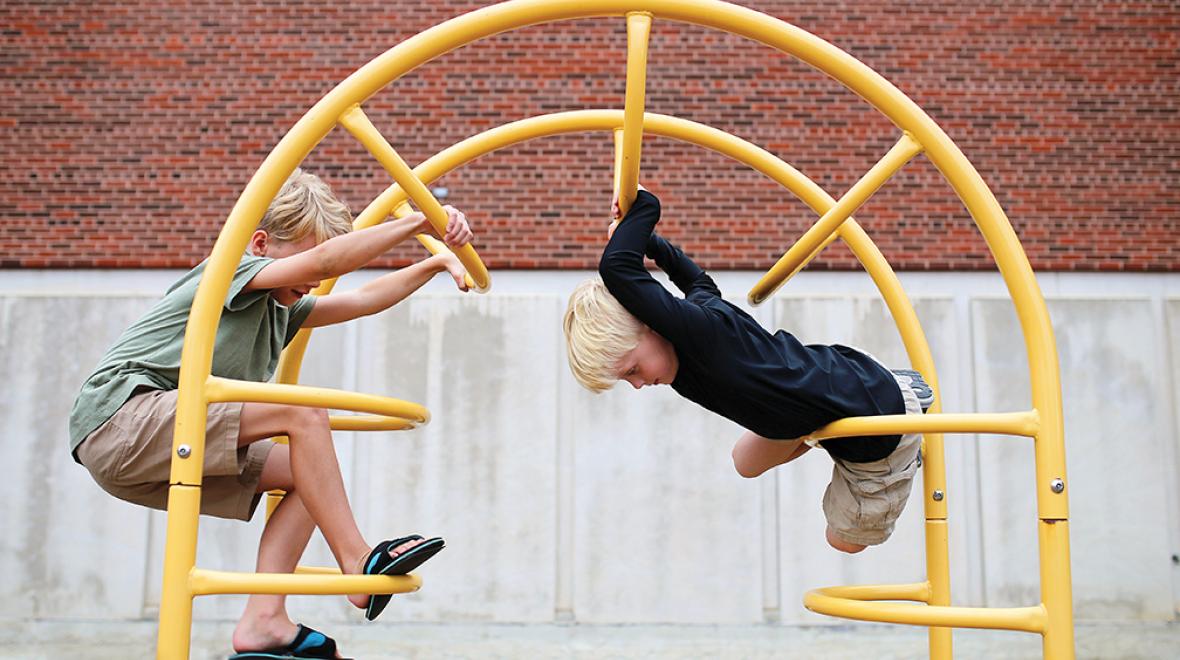
Most kids react to sensory input in predictable ways, but some do not. Some kids may underreact to sensory input because of a sensory-processing issue. These kids need more sensory stimulation to respond to stimuli and in an effort to gain that stimulation, may engage in what we call sensory-seeking behavior.
Sensory-seeking behavior among children is increasingly common today, but the good news is that we now know more about it and how to help kids who are struggling with sensory-processing issues.
It was not so long ago that children with these issues were thought of as “difficult” children because of the challenging behavior associated with these issues.
Common sensory-seeking behaviors
Hearing, sight, smell, touch, taste are the most well-known senses, but there are also other, lesser-known senses, and two of them have an impact on your child’s ability to respond to sensory information. Proprioception refers to the sense of balance, self-movement and body position that is mediated by neurons located in muscles, tendons and joints; spatial orientation is associated with the ability to identify one’s position in space.
All of these senses influence the behavior of a child with sensory-seeking issues. This child may:
- Consistently crash into things
- Have poor fine motor skills, which makes them appear clumsy
- Behave in a loud manner, such as talking loudly and walking loudly.
- Be a messy eater
- Engage in dangerous behavior because of their need for more stimulation
- Constantly need to chew, bite or lick things, such as their clothes, toys, pens and other objects
- Have regular meltdowns
- Appear to be aggressive with other kids; for example, pushing them and hugging them too tightly
- Be overly touchy with both people and objects
- Be attracted to loud noises
- Be unable to keep still — these children are often described as “hyperactive”
The good news is that providing sensory input can help your child get the stimulation they seek, increase their awareness of their bodies and help them adapt more easily to their environment. Here are some indoor and outdoor activities that will help your sensory-seeking child.
Indoor sensory-seeking activities
- Play dough has been providing sensory input for children for years! By allowing your child to squash, knead and pound, play dough activities give proprioceptive input. These activities also strengthen your child’s fine motor skills.
- Give your child a stress ball and let them squeeze it. As with play dough, this will provide proprioceptive input.
- Yoga exercises are whole-body activities that offer considerable stimulation. Many kids love animal yoga poses in which they get to “hop like a kangaroo,” “walk like a crab,” “slither like a snake” or “jump like a cat.” Try online yoga classes that are specially designed for kids (cosmickids.com). If your child is age 5 or older, your entire family will enjoy the ThinkFun Yoga Spinner Game, which will produce the sensory input they need.
- Finger painting is a powerful proprioceptive activity for sensory-seeking children.
- Chewable fidgets can provide the oral stimulation your child seeks, and there are hundreds to choose from.
Outdoor sensory-seeking activities
- Swimming is one of the best proprioceptive activities because it is a whole-body activity.
- Jumping on a trampoline is a great activity for a sensory-seeking child because it will help them work on both their balance and spatial orientation. Purchasing an indoor trampoline will ensure that your child gets their sensory input, no matter the weather!
- Pikler triangles or monkey bars stimulate your child’s entire body by encouraging them to pull, push, crawl, jump, twist and so on. Be sure to get a sturdy product that they can use for years.
- Have your child plant their own garden or help in yours. Activities such as digging and weeding are all great for proprioceptive input.
- Create a hopping obstacle course by placing obstacles on the ground (cardboard boxes, a hula hoop or sticks, for example) and ask your child to jump either on or in between the obstacles. Make the course harder by varying the instructions (such as hop with one foot, hop with both feet) or by increasing the distance between obstacles.
- The wheelbarrow walk provides proprioceptive input and strengthens your child’s muscles. Grab their ankles and let them use their hands to move around. You can make the activity more fun by putting obstacles in their path.
Occupational therapists say that when it comes to providing activities for sensory-seeking children, short but frequent multisensory activities are more effective than infrequent and lengthy ones.
An easy way to ensure that your child is getting sufficient sensory input is to have them participate in age-appropriate chores as often as possible. For example, they can bring in the groceries, help in the garden, empty the dishwasher, be “in charge” of the laundry basket or the garbage bins (taking them to and from the curb), vacuum or even mow the lawn if they are old enough.
A therapist may be in order if you feel that your child’s sensory-seeking behavior is interfering with their home life and school life. A good therapist will be able to assess your child and propose a personalized sensory plan to help them find greater balance.
You might also like: |











